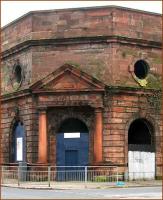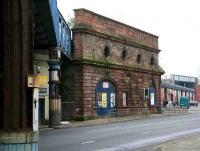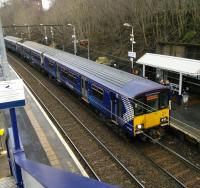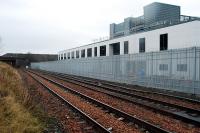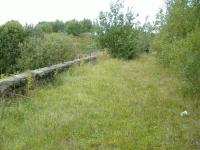City of Glasgow Union Railway
Introduction
The major feature of this line was Glasgow St Enoch station. This station was famous for its quality hotel. The station has been closed an completely demolished. There were two glazed roofs side-by-side here situated above the Glasgow streets. The original smaller version of the station was called Dunlop Street. The site of the station is now several car-parks and the St Enochs shopping centre.
This railway is open to freight between Shields Road and High Street. Between Bellgrove and Springburn the line is open to passenger trains. A new line (the Cowlairs Chord) has been brought into use to allow trains to run down the line from Glasgow Queen Street High Level. The line has a link to the line to Cumbernauld and trains from High Level Queen Street use this link. The section of the line between Gorbals and Larkfield is closed and uplifted.
Dates
Portions of line and locations
This line is divided into a number of portions.
Pollok Junction to St Enoch
This opened from Pollok Junction to Dunlop Street in 1870.
This is the junction between the former Glasgow and Paisley Joint Railway and the later City of Glasgow Union Railway (opened 1870). The junction allowed trains from Glasgow St Enoch to join the route west to Paisley Gilmour Street. It was immediately west of the now closed Shields Road [CGU] station.
...
See also
Glasgow and Paisley Joint Railway
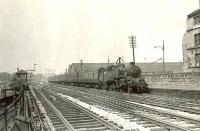
G H Robin collection by courtesy of the Mitchell Library, Glasgow 23/05/1959
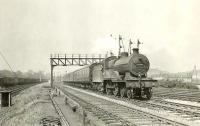
G H Robin collection by courtesy of the Mitchell Library, Glasgow //1959
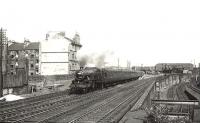
G H Robin collection by courtesy of the Mitchell Library, Glasgow 05/05/1956
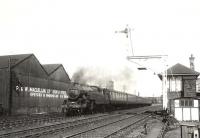
G H Robin collection by courtesy of the Mitchell Library, Glasgow 05/05/1956
This was a two platform station - the southern two platforms of the four platform Shields Road station, the two platforms to the north were originally Pollokshields station.
...
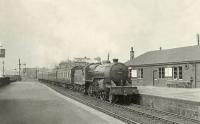
G H Robin collection by courtesy of the Mitchell Library, Glasgow 18/04/1959
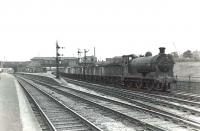
See
G H Robin collection by courtesy of the Mitchell Library, Glasgow 30/06/1959
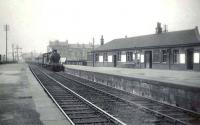
G H Robin collection by courtesy of the Mitchell Library, Glasgow 06/06/1950
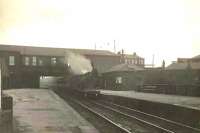
G H Robin collection by courtesy of the Mitchell Library, Glasgow 06/06/1950
This junction gave access to Port Eglinton Goods from the west. The signal box, of 1885, here closed in 1903 when control was taken over by Port Eglinton Junction. The line and goods yard closed in 1966.
...
See also
Paisley Canal Line (Glasgow and South Western Railway)
This was an important junction where the routes to Ayrshire via Paisley Gilmour Street and Paisley Canal met before running together to Glasgow St Enoch. The layout altered over the years.
...
See also
Paisley Canal Line (Glasgow and South Western Railway)
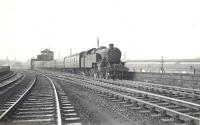
G H Robin collection by courtesy of the Mitchell Library, Glasgow 21/11/1958
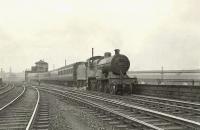
G H Robin collection by courtesy of the Mitchell Library, Glasgow 25/04/1959

G H Robin collection by courtesy of the Mitchell Library, Glasgow 05/05/1956
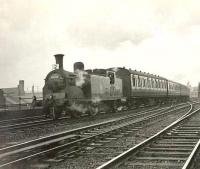
G H Robin collection by courtesy of the Mitchell Library, Glasgow 25/04/1959
This was a four platform elevated station on the east side of Eglinton Street running east as far as the bridge over Surrey Street the Cumberland Street junction.
...

John Yellowlees 01/07/2021
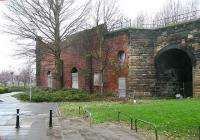
John Furnevel 11/03/2007
Gorbals Junction was to the north of this station. As built, the line was double track from St Enoch to this junction. The station was built on the V of the junction.
...
This junction on the City of Glasgow Union Railway was between the approaches to Glasgow St Enoch from Cumberland Street (and the west via Paisley Gilmour Street or Paisley Canal) and Strathbungo (and the south to Barrhead and Kilmarnock).
...
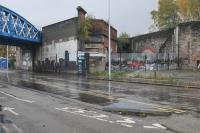
Bill Roberton 30/10/2022
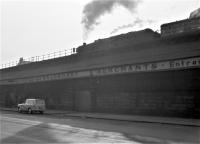
Robin McGregor 31/03/1965
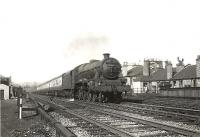
G H Robin collection by courtesy of the Mitchell Library, Glasgow 05/05/1956
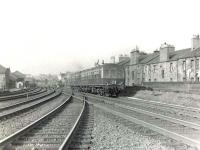
G H Robin collection by courtesy of the Mitchell Library, Glasgow 20/07/1961
This is a four track viaduct, currently carrying two tracks. It is also known as the Clydebridge Viaduct, although this name is also used for a viaduct on the Rutherglen and Coatbridge Branch (Caledonian Railway) and at Rutherglen.
...
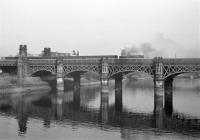
Robin McGregor 31/03/1965

Ewan Crawford //1987

Ewan Crawford //1987
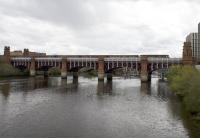
Colin McDonald 27/04/2018
This was the junction between the lines into Glasgow St Enoch (opened in 1870 to the east end of the station 'Dunlop Street') and those from Saltmarket Junction and the east (1871). It allowed trains from the terminus to run south to Gorbals Junction and then either west to Paisley and Ayrshire or south to Barrhead, Kilmarnock, Carlisle and beyond.
...

G H Robin collection by courtesy of the Mitchell Library, Glasgow 21/09/1958

G H Robin collection by courtesy of the Mitchell Library, Glasgow 20/06/1961

G H Robin collection by courtesy of the Mitchell Library, Glasgow 20/06/1961

Colin McDonald 31/10/2015
This was a temporary terminus in Glasgow while the land for Glasgow St Enoch completed purchase and construction between 1870 and 1876. The station had four platforms, along the lines of the later station, between Dunlop Street and Stockwell Street. The station was also known as Central Station.
...
This was a large terminus with 12 platforms in Glasgow. The main entrance was from St Enoch Square in the city centre.
...

Robin McGregor 27/08/1965

John Yellowlees 16/07/2022

Robin McGregor 16/04/1965

Brian Haslehust 20/10/1962
Clyde Junction to High Street Junction
This opened in 1871.
This was the junction between the lines into Glasgow St Enoch (opened in 1870 to the east end of the station 'Dunlop Street') and those from Saltmarket Junction and the east (1871). It allowed trains from the terminus to run south to Gorbals Junction and then either west to Paisley and Ayrshire or south to Barrhead, Kilmarnock, Carlisle and beyond.
...

G H Robin collection by courtesy of the Mitchell Library, Glasgow 21/09/1958

G H Robin collection by courtesy of the Mitchell Library, Glasgow 20/06/1961

G H Robin collection by courtesy of the Mitchell Library, Glasgow 20/06/1961

Colin McDonald 31/10/2015
A curve opened from Saltmarket Junction on the existing line from Gorbals Junction to High Street Junction (1871) in 1882. This served platforms 1 and 2 at Glasgow St Enoch. A signal box opened with the junction, in its 'V'.
...
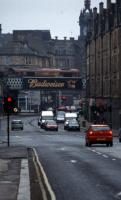
John Clark 19/02/2006
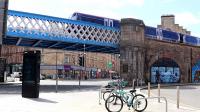
...
Network Rail /08/2023
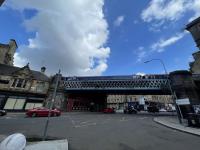
Network Rail /08/2022
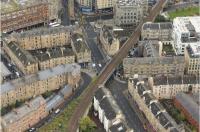
Network Rail /10/2020
This was a two platform station on a raised section of line. The line remains open. Pedestrian access to the station was from the Gallowgate itself.
...
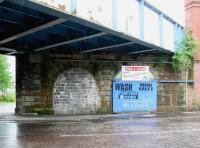
John Furnevel 06/05/2007
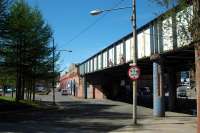
Ewan Crawford 05/05/2006
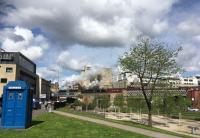
John Robin 02/05/2019
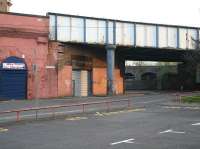
John Furnevel 06/05/2007
This junction was east of Gallowgate station. To the east the line split into four routes which were, from north to south, the goods loop used for reversal into College Goods, the line to High Street Junction, a series of dead end sidings and the link to Gallowgate Central Junction.
...
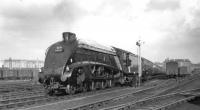
G W Robin 26/09/1964

G W Robin 26/09/1964
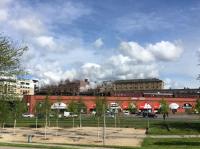
John Robin 02/05/2019
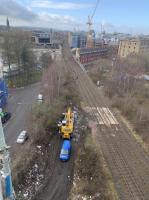
Iain Teaz 25/02/2021
This is the junction to the east of High Street station where the line east to Airdrie is met with the freight and empty stock movements line from Pollok Junction.
...
See also
Glasgow and Coatbridge Branch (North British Railway)
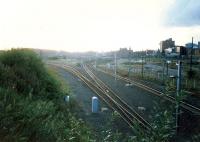
Ewan Crawford //1987
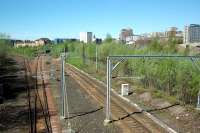
Ewan Crawford 05/05/2006
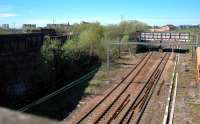
Ewan Crawford 05/05/2006
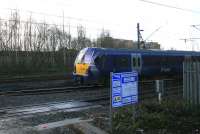
Colin McDonald 24/01/2015
Scotland Street Junction to Port Eglinton Junction
Opened in 1874 this gave access to General Terminus.
This was the junction between the original General Terminus and Glasgow Harbour Railway and a connection from the City of Glasgow Union Railway from Port Eglinton Junction (Shields Bank Signal Box also closed). The junction allowed trains from the latter line access to General Terminus from the south. The approach from Shields Bank was single track, doubling at the junction.
...
See also
General Terminus and Glasgow Harbour Railway
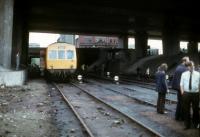
Roger Geach Collection 25/08/1979
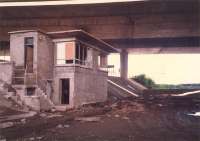
Ewan Crawford //1987
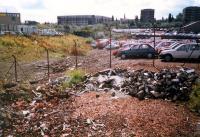
Ewan Crawford //1987
This box controlled the east end of the climb from the Scotland Street Junction, on the approach to General Terminus, to Port Eglinton Junction.
...
This was an important junction where the routes to Ayrshire via Paisley Gilmour Street and Paisley Canal met before running together to Glasgow St Enoch. The layout altered over the years.
...
See also
Paisley Canal Line (Glasgow and South Western Railway)

G H Robin collection by courtesy of the Mitchell Library, Glasgow 21/11/1958

G H Robin collection by courtesy of the Mitchell Library, Glasgow 25/04/1959

G H Robin collection by courtesy of the Mitchell Library, Glasgow 05/05/1956

G H Robin collection by courtesy of the Mitchell Library, Glasgow 25/04/1959
Saltmarket Junction to St Enoch
Opened in 1882.
This was a large terminus with 12 platforms in Glasgow. The main entrance was from St Enoch Square in the city centre.
...

Robin McGregor 27/08/1965

John Yellowlees 16/07/2022

Robin McGregor 16/04/1965

Brian Haslehust 20/10/1962
A curve opened from Saltmarket Junction on the existing line from Gorbals Junction to High Street Junction (1871) in 1882. This served platforms 1 and 2 at Glasgow St Enoch. A signal box opened with the junction, in its 'V'.
...

John Clark 19/02/2006

...
Network Rail /08/2023

Network Rail /08/2022

Network Rail /10/2020
South Side to Gorbals Junction
Opened in 1876.
This terminus was located at the junction of Pollokshaws Road and Cathcart Street (now Cathcart Road). Initially it was the Glasgow terminus of the Glasgow, Barrhead and Neilston direct Railway. An eastern portion was added to the station, opened with the Clydesdale Junction Railway and Hamilton branch. The terminus was on the south side of the River Clyde, a little distant from old ...
More detailsSee also
Glasgow, Barrhead and Neilston Direct Railway
Glasgow Southern Terminal Railway
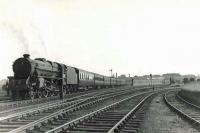
G H Robin collection by courtesy of the Mitchell Library, Glasgow 20/07/1961
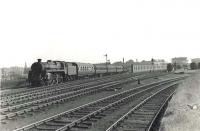
G H Robin collection by courtesy of the Mitchell Library, Glasgow 20/07/1961
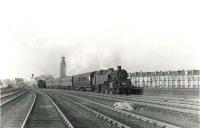
G H Robin collection by courtesy of the Mitchell Library, Glasgow 20/07/1961
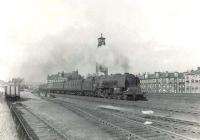
G H Robin collection by courtesy of the Mitchell Library, Glasgow 20/07/1961
This was a long six road carriage shed south of South Side [GB and NDR], built after 1892 on the east side of the approach to that former station and with the City of Glasgow Union Railway line on its east side on approach to Glasgow St Enoch from Langside Junction to the south. The sidings through the carriage shed were looped.
...
See also
Glasgow, Barrhead and Neilston Direct Railway
Gorbals station consisted of four platforms, 2 platforms on the line south to Barrhead and 2 on the line west to Paisley known as Main Street Gorbals. The station was above street level.
...
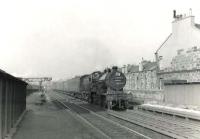
G H Robin collection by courtesy of the Mitchell Library, Glasgow 20/07/1961
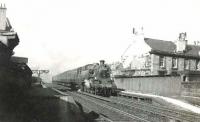
G H Robin collection by courtesy of the Mitchell Library, Glasgow 20/07/1961
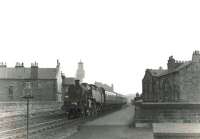
G H Robin collection by courtesy of the Mitchell Library, Glasgow 20/07/1961

Graham Morgan 16/02/2010
This junction on the City of Glasgow Union Railway was between the approaches to Glasgow St Enoch from Cumberland Street (and the west via Paisley Gilmour Street or Paisley Canal) and Strathbungo (and the south to Barrhead and Kilmarnock).
...

Bill Roberton 30/10/2022

Robin McGregor 31/03/1965

G H Robin collection by courtesy of the Mitchell Library, Glasgow 05/05/1956

G H Robin collection by courtesy of the Mitchell Library, Glasgow 20/07/1961
St Johns Junction to Gallowgate Junction
Allowed access to Bridgeton Central. Opened 1893.
This junction was east of Gallowgate station. To the east the line split into four routes which were, from north to south, the goods loop used for reversal into College Goods, the line to High Street Junction, a series of dead end sidings and the link to Gallowgate Central Junction.
...

G W Robin 26/09/1964

G W Robin 26/09/1964

John Robin 02/05/2019

Iain Teaz 25/02/2021
This junction opened in 1893 with the construction of a curve (1893) from St Johns Junction on the City of Glasgow Union Railway to meet the Glasgow City and District Railway (1892) line to Bridgeton Central. Also known as Gallowgate Central Junction.
...
See also
Glasgow City and District Railway
College Goods Loop
Allowed access to College Goods without fouling the passenger line. Opened 1883.
This junction was east of Gallowgate station. To the east the line split into four routes which were, from north to south, the goods loop used for reversal into College Goods, the line to High Street Junction, a series of dead end sidings and the link to Gallowgate Central Junction.
...

G W Robin 26/09/1964

G W Robin 26/09/1964

John Robin 02/05/2019

Iain Teaz 25/02/2021
This large goods yard was the Glasgow and South Western Railway's main goods yard in Glasgow. The site was approached from a loop off the City of Glasgow Union Railway immediately west of High Street Junction. Approach was from the east so trains from the central Glasgow direction, from which most trains would approach, would reverse into the various sidings.
...

John Furnevel 09/09/2007

Ewan Crawford //1998

Ewan Crawford 05/05/2006
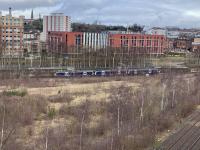
Iain Teaz 07/03/2021
This is the junction to the east of High Street station where the line east to Airdrie is met with the freight and empty stock movements line from Pollok Junction.
...
See also
Glasgow and Coatbridge Branch (North British Railway)

Ewan Crawford //1987

Ewan Crawford 05/05/2006

Ewan Crawford 05/05/2006

Colin McDonald 24/01/2015
Bellgrove to Cowlairs
Opened 1875.
Bellgrove East signal box was at Bellgrove Junction, the first version being on the north side of the junction. This was replaced in 1904 when the line was quadrupled. The new box - somewhat narrower than typical boxes - was in the 'V' of the junction and surrounded by lines thanks to the complications of the passenger and goods lines. (To the west the southern of the four through lines were the ...
More detailsSee also
Glasgow and Coatbridge Branch (North British Railway)
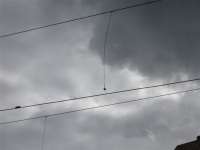
Colin Harkins 29/08/2006
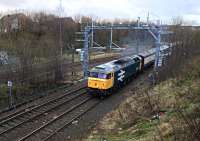
Colin McDonald 23/12/2015
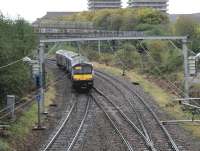
Colin McDonald 06/10/2014
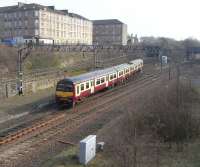
David Panton 26/03/2011
This is a two platform station. There was a booking office by Alexandra Cross which survived until the 1980s. There was no signal box, Haghill Junction being just to the north. ...
More details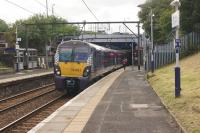
John McIntyre 14/08/2021
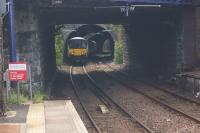
John McIntyre 14/08/2021
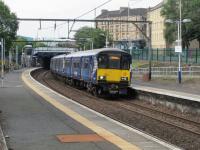
David Panton 24/08/2019
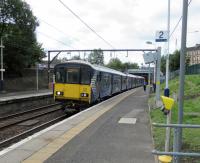
David Panton 25/08/2018
This junction was to the south of Alexandria Parade station. Two forks of the City of Glasgow Union Railway came together here. To the south west was the line from High Street Junction, St Enoch, Shields and Gorbals. To the south east was the route to Parkhead North Junction. Between these was Haghill Goods and the line to the Haghill Destructor. The signal box ...
More details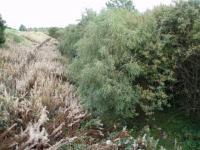
Colin Harkins 29/09/2006

Colin Harkins 29/09/2006
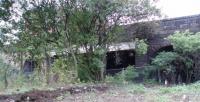
Colin Harkins 29/09/2006
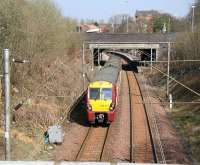
John Furnevel 02/04/2009
This is a two platform station in a cutting to the east of Alexandra Park Street. The line is crossed by Alexandra Parade to the south with ramps down to the platforms. There is no car park. Alexandra Park is to the east.
...
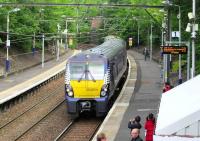
David Panton 25/08/2018
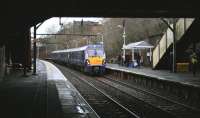
Colin McDonald 23/12/2014
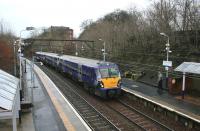
Colin McDonald 23/12/2014
This double track tunnel is 110 yards long. It is between Barnhill Tunnel (to the north) and Alexandra Parade (to the south).
...
This was a four platform station of two islands. The northbound island platform was quite narrow. Platforms were under Garngad road, with the larger part to the north.
...
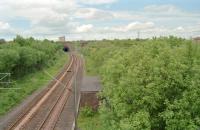
Ewan Crawford //1997
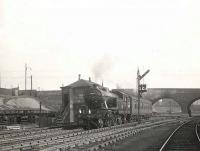
G H Robin collection by courtesy of the Mitchell Library, Glasgow 20/05/1956
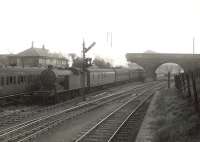
G H Robin collection by courtesy of the Mitchell Library, Glasgow 08/05/1956
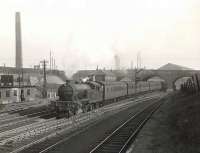
G H Robin collection by courtesy of the Mitchell Library, Glasgow 08/05/1956
Garngad Goods was located to the south of the Garngad station, west of the line, curving off from the station with tracks running to the west. A copper works was off to the west - Garngad Works.
...
This double track tunnel is 130 yards long. The tunnel is south of Barnhill station, the line passing under the large and broad embankment of the Garnkirk and Glasgow Railway where the lines fan out at the former Sighthill East Junction [1st].
...
This is a suburban two platform station. There was a small minerals yard on the east side, approached from the north, now gone. The main station building, demolished, was on the northbound platform.
...
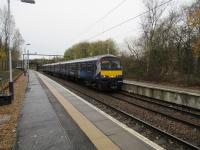
David Panton 01/12/2018
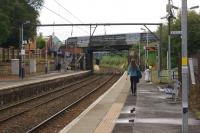
John McIntyre 14/08/2021
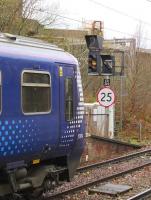
David Panton 01/12/2018
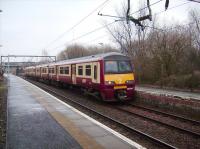
David Panton 12/01/2008
The 1875 City of Glasgow Union Railway ran from Cowlairs West Junction parallel to, and on the east side of, the 1855 Sighthill Branch (Edinburgh and Glasgow Railway) and a junction existed here between these lines and the exchange line to Sighthill East Junction [1st] on the Buchanan Street Extension (Caledonian Railway).
...
See also
Sighthill Branch (Edinburgh and Glasgow Railway)
This works was established by Walter Montgomerie Neilson beside the City of Glasgow Union Railway which had opened in 1875. The works was across the CGU and Sighthill Branch (Edinburgh and Glasgow Railway) from the Hyde Park Works [2nd]. Neilson had formerly been a partner in the competing works.
...
See also
North British Locomotive Company
This is a four platform station. Two platforms are through lines and two are bays served from the south east.
...

John Yellowlees 02/07/2021
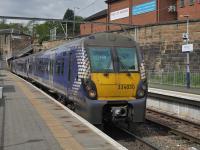
...
Bill Roberton 11/05/2023
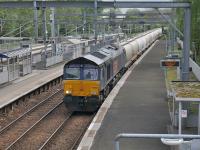
...
Bill Roberton 11/05/2023
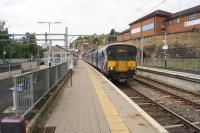
John McIntyre 14/08/2021
This junction opened in 1992 when the single track Cowlairs Chord opened from here, the east end, to Cowlairs South Junction the west. This new chord allowed trains to Cumbernauld to run directly from Glasgow Queen Street High Level for the first time. Prior to this this diesel shuttle service ran from Springburn to Cumbernauld, connecting with the electric Milngavie to ...
More detailsSee also
Cowlairs Chord (British Railways)
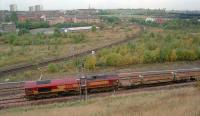
Ewan Crawford //2000
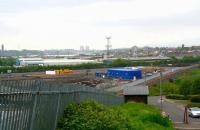
John Furnevel 13/05/2007
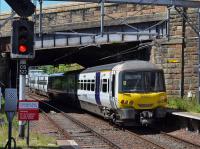
Bill Roberton 21/06/2018
This is a four way junction. The 1842 Edinburgh and Glasgow Railway is met by the 1855 Sighthill Branch (Edinburgh and Glasgow Railway) and the 1858 Glasgow, Dumbarton and Helensburgh Railway. The City of Glasgow Union Railway's north end reached here in 1875. In addition the Cowlairs Works was to the south, on the west side.
...
See also
Glasgow, Dumbarton and Helensburgh Railway
Edinburgh and Glasgow Railway
Sighthill Branch (Edinburgh and Glasgow Railway)
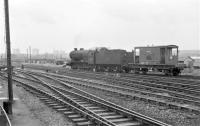
Robin McGregor 21/08/1965
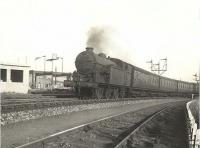
G H Robin collection by courtesy of the Mitchell Library, Glasgow 06/09/1955
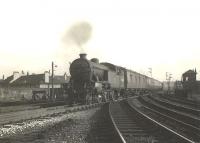
G H Robin collection by courtesy of the Mitchell Library, Glasgow 06/09/1955
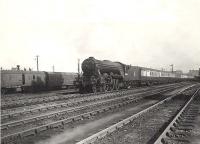
G H Robin collection by courtesy of the Mitchell Library, Glasgow 26/06/1956
Parkhead to Alexandria Parade
Opened 1875.
The lines from Bellgrove and Alexandra Parade met here. The junction was east of Parkhead North station. The signal box was on the north side of the junction. Opposite on the south side of the line was Parkhead Shed and to its east a goods yard. On the north side of the line was Parkhead Railway Wheel and Axle Works.
...
See also
Glasgow and Coatbridge Branch (North British Railway)
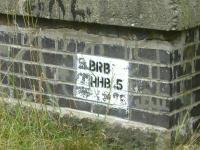
Colin Harkins 29/08/2006
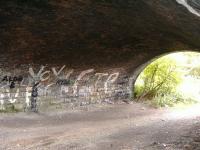
Colin Harkins 29/08/2006

John Furnevel 02/04/2009
This goods yard was at the east end of a loop laid on the south side of the line between Parkhead Junction [NB] and Haghill Junction around 1900.
...
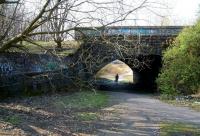
John Furnevel 02/04/2009
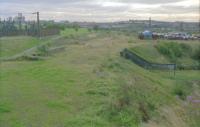
Ewan Crawford //1988
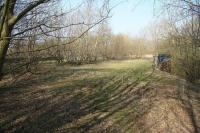
John Furnevel 02/04/2009
This goods and minerals station was in the 'V' of Haghill Junction south of Alexandra Parade. The entry to the yard could be seen on the south side of Cumbernauld Road.
...
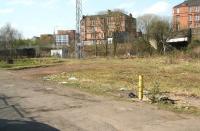
John Furnevel 02/04/2009
This junction was to the south of Alexandria Parade station. Two forks of the City of Glasgow Union Railway came together here. To the south west was the line from High Street Junction, St Enoch, Shields and Gorbals. To the south east was the route to Parkhead North Junction. Between these was Haghill Goods and the line to the Haghill Destructor. The signal box ...
More details
Colin Harkins 29/09/2006

Colin Harkins 29/09/2006

Colin Harkins 29/09/2006

John Furnevel 02/04/2009
St Enoch Shed
Opened 1885.
This was a 12 road locomotive shed built in the triangle of lines Glasgow St Enoch Station - Clyde Junction [CGU] - Saltmarket Junction. The shed was built under Andrew Galloway, the Glasgow and South Western Railway's engineer.
...
This was the junction between the lines into Glasgow St Enoch (opened in 1870 to the east end of the station 'Dunlop Street') and those from Saltmarket Junction and the east (1871). It allowed trains from the terminus to run south to Gorbals Junction and then either west to Paisley and Ayrshire or south to Barrhead, Kilmarnock, Carlisle and beyond.
...

G H Robin collection by courtesy of the Mitchell Library, Glasgow 21/09/1958

G H Robin collection by courtesy of the Mitchell Library, Glasgow 20/06/1961

G H Robin collection by courtesy of the Mitchell Library, Glasgow 20/06/1961

Colin McDonald 31/10/2015










